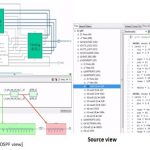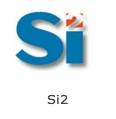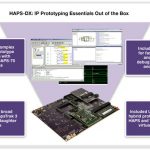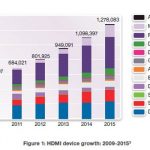The set of MIPI specifications has severely enlarged during the past year. This is a positive point, as the large set of specifications induces a wider choice, and a chip maker can decide to implement a complex specification to differentiate with competitors, or select a specification just tailored to support a basic architecture… Read More
Tag: synopsys
Untangling snags earlier and reducing area by 10%
The over 20 years of experience behind Synopsys Design Compiler is getting a new look for 2014, and we had a few minutes with Priti Vijayvargiya, director of product marketing for RTL synthesis, to explore what’s in the latest version of the synthesis tool.
Previewed today, Synopsys Design Compiler 2013.12 continues to target … Read More
First Verdi Interoperability Apps Developer Forum
Way back when SpringSoft was still SpringSoft and not Synopsys they launched Verdi Interoperability Apps (VIA) and an exchange for users to share them open-source style. I wrote about it back in 2011 when it was announced. Today, Synopsys announced the first developer forum for VIA. It will be held at SNUG on Wednesday, March 26,… Read More
Parasitic Debugging in Complex Design – How Easy?
When we talk about parasitic, we talk about post layout design further expanded in terms of electrical components such as resistances and capacitances. In the semiconductor design environment where multiple parts of a design from different sources are assembled together into highly complex, high density SoC, imagine how complex… Read More
The Semiconductor Landscape – III
In continuation to my earlier observations and anticipations (landscape1, landscape2) which came up to my expectations, I was further inspired to ponder over the macros of our ever growing semiconductor industry. We may argue the business is stagnating, we may argue that the pace of scaling is slowing, but when I look back at the… Read More
Special Interest Group for HSPICE at DesignCon in Two Weeks
DesignCon brings together engineers from around the world that are interested in IC design, package design and board design, plus the signal integrity issues of creating high-speed systems. In just two weeks there’s a Special Interest Group(SIG) just for users of HSPICE in their tool flow, and it meets for three hours during… Read More
An Update on the OpenPDK for IC Design
IC designers use EDA tools to implement their logical and physical design, and these tools require foundry-specific information for:
- Design Rule Checking (DRC)
- Layout Versus Schematic (LVS)
- Library Symbols
- Parasitic EXtraction (PEX)
A little FPGA-based prototyping takes the eXpress
Ever sat around waiting for a time slot on the one piece of big, powerful, expensive engineering equipment everyone in the building wants to use? It’s frustrating for engineers, and a project manager’s nightmare: a tool that can deliver big results, and a lot of schedule juggling.… Read More
Why integrating HDMI 2.0?
High Definition Multimedia Interface (HDMI) is today part of our day to day life, at home as well as at our office we are using devices integrating HDMI ports. HDMI penetration is well illustrated by this picture (created in Dec. 2011 by In-Stat): from DTV to Game console, the devices belong to the Consumer Electronics market segments,… Read More
Known Unknowns and Unknown Unknowns
Donald Rumsfeld categorized what we knew into known unknowns and unknown unknowns. In a chip design, those unknown unknowns can bite you and leave you with a non-functional design, perhaps even intermittent failures which can be among the hardest problems to debug.
Chips are too big to do any sort of full gate-level simulation,… Read More









